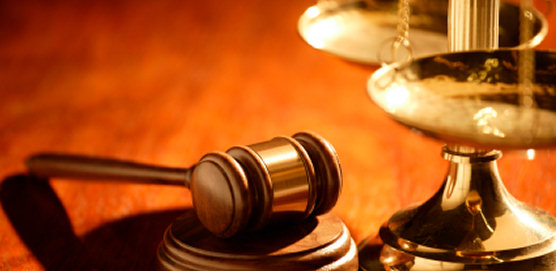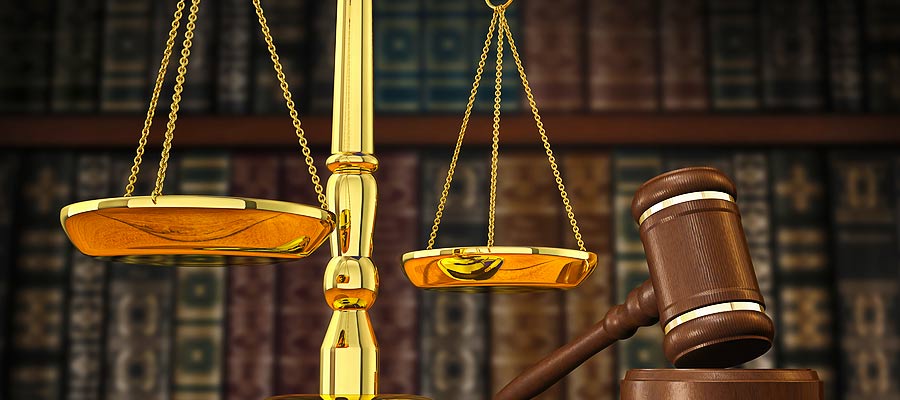law firm attorneys Biogarphy
Source(google.com.pk)
Established in 1912 by our founding partner, William Montgomery, the original practice provided general counsel to the founding citizens of Seattle under the name of “The Montgomery Law Firm.” William Montgomery, Jr. joined the firm in the following years forming the father and son partnership of “Montgomery and Montgomery.” After the Second World War, Robert Purdue, Jack Blankinship, and Alan Austin transformed the family operation into the comprehensive and collaborative team it is today. Under their leadership and guidance, Montgomery Purdue Blankinship & Austin PLLC has grown into a full-service firm comprised of nearly 30 attorneys. The grandson and great-grandson of our founder, Alan Montgomery and his son Ryan, are practicing partners of the firm and in the tradition of our namesake we continue to offer a full-range of transactional and litigation services to clientele throughout the Northwest.In 1923, a young WW I veteran and law student named Horace L. Lohnes joined Mr. Dow's firm as a law clerk. As befits a man around whom legends would grow, Horace Luther Lohnes was born in 1897 in the back room of a log cabin on his grandfather's farm near Donnellsville, Ohio. His father was a blacksmith who worked without wages for young Horace's grandfather in order to pay rent for the cabin. Mr. Lohnes worked his way through school and eventually became an engineering student at The Ohio State University. He entered the Army when WWI broke out, and was hospitalized for six months after his discharge, where the people who tended to him encouraged him to study law. He took their advice and received his law degree and a Master of Laws degree from George Washington University. He later earned a Masters Degree in Political Science from American University.
The first communications law matter handled by the firm arose the same year Mr. Lohnes joined, when such matters were still under the jurisdiction of the ICC. Geophysical radio stations were then being used for oil exploration, and Mr. Dow turned to his young colleague for help in resolving a controversy over license renewals. Mr. Lohnes solved the problem, and in doing so launched one of the first careers in communication law.
The Radio Act of 1912 made it unlawful to operate a radio station without a license from the Secretary of Commerce. After WW I, station licensing progressed in fairly orderly fashion, until the Attorney General ruled in 1926 that the Commerce Department lacked the authority to assign "wavelengths" or control the development of broadcasting. Congress quickly enacted the Radio Act of 1927, creating the Federal Radio Commission, and Horace Lohnes was present at its creation, representing Mr. Dow's oil companies with the help of a physicist from the University of Minnesota, C. M. Jansky, who became the first consulting engineer in the radio field.
Radio communications flourished, as did Mr. Lohnes' practice, and in 1935 he hired a young telegrapher and engineer from the University of Michigan, who had recently graduated from its law school, Fred W. Albertson.
Fred Woodward Albertson was born in 1908 in a very small place called Fairgrove (pop. 498) in the Thumb of Michigan. Like Messrs. Dow and Lohnes, he came from modest circumstances. His parents were railroad telegraphers and its is likely that he learned Morse Code as an infant. At age 16, he became a licensed amateur radio operator, beginning a life-long hobby, and at age 18, he obtained a first-class commercial radio license and became the chief engineer of state WMPC in Lapeer, Michigan.
At the University of Michigan's Engineering School, Fred handled communications with the school's Arctic expedition and worked on equipment used to measure the thickness of glacial ice in Greenland. After graduating from the University of Michigan law school in 1934, he for a time considered continuing with his engineering interests and becoming a patent attorney. However, through a fraternity newsletter he learned of Horace Lohnes' budding communications practice, and wrote to him expressing his interest in radio law. Mr. Lohnes' reply to this inquiry would have dissuaded a less committed man:
I can appreciate your interest in...radio law. ...The opportunities in this field for a young lawyer...I believe to be extremely limited.
The explanation of this gloomy perspective, from a man who was eternally busy handling radio licenses, lies in the perception that the "creative" aspect of the business would soon end, and the remaining work would be merely "clerical." Despite this response, Fred's determination to be a radio lawyer persisted, and Mr. Lohnes, faced with a growing case load, offered him a job in 1935, at an annual salary of $1,000, providing he would do his own typing and filing, and familiarize himself with all the applicable case law and the FCC's rules and regulations.
Fred Albertson was the ninth lawyer to join the firm. Together with Horace Lohnes and others who were attracted to the new field of broadcasting, communications regulation overtook work for the petroleum industry as the firm's dominant practice, a situation that was to remain in place into the 1970's as Dow Lohnes continued to represent many of the pioneering efforts in radio and television.
n 1960, the firm merged with the tax practice of Bernard J. Long, Sr. Accompanying Mr. Long was a young lawyer who had graduated Harvard Law School just two years earlier, Richard L. Braunstein. The new tax practice, and the arrival of Messrs. Long and Braunstein, were soon to prove a major development in the life of Dow Lohnes. Bernard Long was a lawyers' lawyer, a former Assistant U.S. Attorney in Washington and Principal Attorney in the Office of Chief Counsel of the Bureau of Internal Revenue (now the IRS). Not only did the firm's new tax practice bring its own clientele, but it brought a new capacity to counsel media and communications clients on their financial affairs, both personal and corporate. Added to the range of business-related resources that were increasingly supplementing the regulatory practice, the tax practice gave Dow Lohnes the ability to serve as the principal law firm to an increasingly diversified clientele, rather than only as their regulatory counsel.
Also in the 1960's, the firm recognized the emergence of the cable television industry (then referred to as "CATV," for Community Antenna Television, reflecting its genesis in mountaintop master antennas that brought television to remote towns shielded direct access to transmitted TV signals). Dow Lohnes was one of the pioneers in representing cable operators as regulation of the cable industry moved from the state and local levels to pervasive FCC control. By the end of the 60's, Dow Lohnes represented 625 cable systems located in all but four of the United States. At the same time, other non-broadcast clients flocked to Dow Lohnes, covering such technologies as land mobile services, private microwave and many specialized uses of telecommunications by local governments and the oil, timber and motion picture industries.
Educational broadcasting was also in its infancy at the beginning of the 1960's. During that decade, the FCC set aside television channels for noncommercial educational use. Congress first enacted legislation providing for matching funds for station construction in 1962, and in 1967, the Public Broadcasting Act created the Corporation for Public Broadcasting and led to the establishment of the Public Broadcasting Service and National Public Radio. In the ensuing years, Dow Lohnes was engaged by many states and universities to represent them in the development of educational television networks, the acquisition of federal funding for construction and operations, and in navigating the complexities of the FCC.
By the 1970's, the practice of "communications law" had changed from a defined body of rules and regulations to an industry practice dealing with a wide variety of legal specialties. Twenty years earlier, it was not uncommon for a "communications lawyer" to advise his (there were very few woman lawyers in those days) clients not only on all FCC matters affecting them but also on trademark, copyright and entertainment law problems, and to represent them in buying and selling stations or systems. But now a substantial body of law and regulation had evolved specifically for "public" radio and television, as well as for cable and other non-broadcast services. Transactions became more complicated. Client requirements for sophisticated tax, corporate and securities related counseling intensified. Intellectual property and entertainment law issues also became more complex with the proliferation of satellite, cable, videocassette and other forms of distribution. Client demands grew for sophisticated labor, litigation, antitrust, and First Amendment counseling services.
As the needs of the communications industry became more specialized, so did Dow Lohnes's practices and attorneys. The firm organized functional practice groups in such areas as litigation, intellectual property joining broadcasting, communications and corporate/tax. Public telecommunications became a separate practice, and a new practice area focusing on the legal needs of the higher education community was organized.
During the 1980's, Dow Lohnes's corporate and tax practice continued its rapid growth. Marion H. Allen, III, a partner with a large Atlanta firm, joined Dow Lohnes to establish the firm's first out-of-town office. (A decade later, Mr. Allen would succeed Mr. Braunstein as the firm's chairman.)
Dow Lohnes's leaders foresaw that growth for its own sake did not best serve the needs of its clients. Instead, the firm has focused on those areas of the law where it has the greatest depth, experience and reputation. This formula has proved itself since 1918 and continues to guide the firm.
In all its areas of practice, Dow Lohnes is dedicated to the standards of uncompromising integrity, superior client service and the uniform delivery of a legal product of outstanding quality. These standards require that major emphasis be given to hiring and developing exceptional lawyers who are dedicated to the firm's clients and to realizing their full potential in this demanding but exciting and intensely satisfying professional environment.
law firm attorney Wallpapers Photos Pictures Pics Images 2013

law firm attorney Wallpapers Photos Pictures Pics Images 2013

law firm attorney Wallpapers Photos Pictures Pics Images 2013

law firm attorney Wallpapers Photos Pictures Pics Images 2013

law firm attorney Wallpapers Photos Pictures Pics Images 2013

law firm attorney Wallpapers Photos Pictures Pics Images 2013

law firm attorney Wallpapers Photos Pictures Pics Images 2013

law firm attorney Wallpapers Photos Pictures Pics Images 2013

law firm attorney Wallpapers Photos Pictures Pics Images 2013

law firm attorney Wallpapers Photos Pictures Pics Images 2013
No comments:
Post a Comment